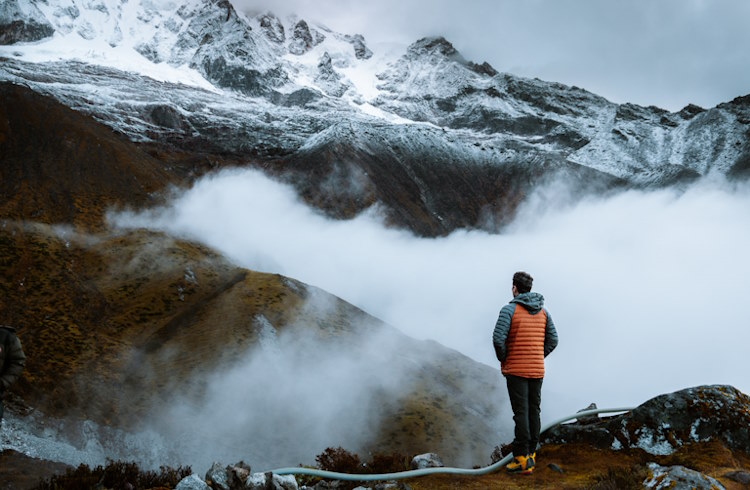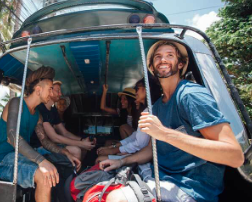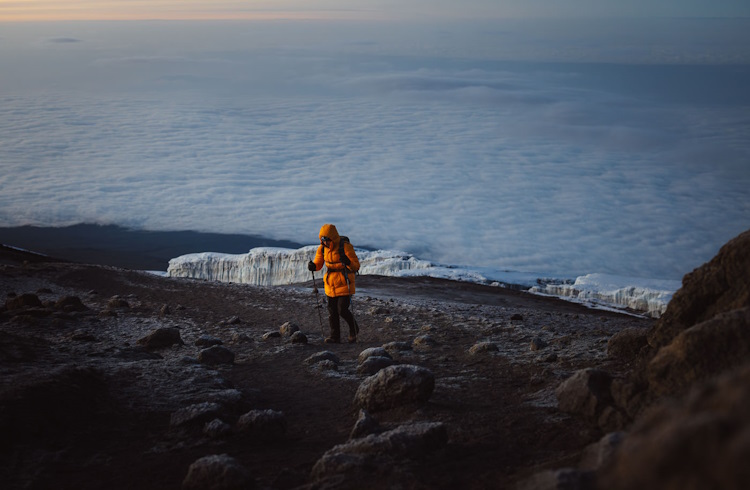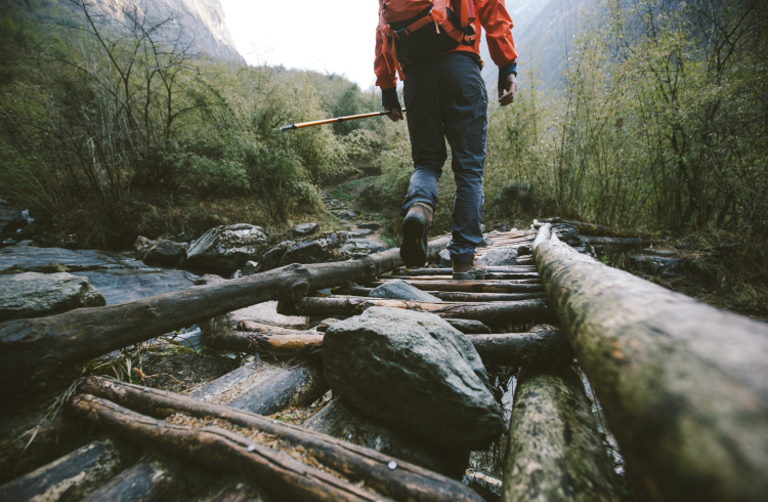High-Altitude Hiking: How to Prepare and Train
Find out how to choose the right trek, why it’s important to acclimatize, the best way to train, and what you need to know about altitude sickness. Experienced trekker Olly Gaspar shares his tips.
 Photo © Olly Gaspar
Photo © Olly Gaspar
High-altitude treks and mountaineering adventures provide an exhilarating and demanding step up from regular trekking. However, for the chance to experience some of the world’s most raw and breathtaking landscapes, you must be prepared for the challenge.
Whether you’re eyeing a multi-day trek to Machu Picchu or a climb up Kilimanjaro, be sure you have the necessary gear and are mentally and physically prepared for the adventure.
- Choosing your first high-altitude adventure destination
- Preparing physically and mentally for a high-altitude trek
- Benefits of elevation training and an actionable training plan
- Essential gear for high-altitude expeditions
Choosing your first high-altitude adventure destination
Choosing the right destination for your first high-altitude hike is the first step. Beginners should consider treks offering manageable altitudes, gradual elevation profiles, and good support infrastructure. Popular treks below 19,000ft (5,790m) include:
- Inca Trail, Peru – Known for its stunning views and historical significance, this trek offers a gradual ascent to Machu Picchu. (Highest elevation: 13,780ft / 4,200m)
- Rocky Mountain National Park, Colorado, USA – Features many well-marked routes with accessible rescue services. (Highest elevation: 14,259ft / 4,346m)
- K2 Base Camp, Pakistan – A remote and scenic trek with epic views of the Karakoram Range, offering a glimpse at some of the world's highest peaks. (Highest elevation: 16,400ft / 5,000m)
- Goecha La Trek, Sikkim, India – Features stunning views of Kanchenjunga, gradual elevation gains, and a rich cultural experience in the eastern Himalayas. (Highest elevation: 16,207ft / 4,940m)
Remember, gradual acclimatization is key, so choose a trek that allows for a slow and steady ascent. If you’ve already had some exposure to higher elevations, consider a trekking peak for high-altitude exposure and an introduction to mountaineering, typically without the need for professional climbing equipment.
- Mount Kilimanjaro, Tanzania – Beginner options like the Lemosho Route are a great choice for beginners looking to experience high-altitude trekking with experienced guides. (Highest elevation: 19,341ft / 5,895m)
- Jebel Toubkal, Morocco – The highest peak in North Africa offering stunning views of the Atlas Mountains and the Berber Villages. (Highest elevation: 13,671ft / 4,167m)
- Mount Kinabalu, Malaysia – This trek offers a challenging yet non-technical ascent starting at tropical rainforest and finishing high above alpine meadows (13,435ft / 4,095m)
When selecting a destination for your first high-altitude trek or climb, prioritize areas with established trekking routes, reliable guides, and easy access to medical facilities. Research each location’s elevation levels, weather conditions, and best times to visit to ensure a safer and more enjoyable adventure.

Simple and flexible travel insurance
You can buy at home or while traveling, and claim online from anywhere in the world. With 150+ adventure activities covered and 24/7 emergency assistance.
Get a quotePreparing physically and mentally for a high-altitude trek
Once you’ve chosen the perfect destination, the next step is to prepare yourself physically and mentally for the unique challenges you'll face.
Mental preparation for high-altitude adventures
Physical fitness is important but preparing mentally for the challenges of high-altitude treks is a different beast than through-hikes at lower elevations.
The fear and uncertainty behind acute altitude sickness is often the hardest part. But, with proper training and professional guides, who ensure gradual elevation profiles for acclimatization, the risks are significantly reduced. Researching, understanding, and recognizing the symptoms of altitude sickness can help you stay calm and confident, trusting your guide and your training process.
Understanding altitude sickness and prevention
Altitude sickness, including Acute Mountain Sickness (AMS), can occur at elevations above 8,200ft (2,500m) due to decreased oxygen levels. This condition can be fatal and is the primary cause of medical evacuations in the Himalayas.
- Acute Mountain Sickness (AMS) - Broad term for altitude sickness. Symptoms include headache (worse when bending over), nausea/vomiting, fatigue, and a general hangover-like feeling.
- High Altitude Cerebral Edema (HACE) - Life-threatening emergency. Symptoms include ataxia (stumbling), confusion, lethargy, and brain swelling, often with AMS symptoms.
- High Altitude Pulmonary Edema (HAPE) - Life-threatening emergency. Symptoms include cough, difficulty breathing with mild exertion, and fluid in the lungs, often with AMS symptoms.
AMS is the most common, often affecting trekkers who ascend too quickly and who don’t allow enough time to acclimatize. Luckily, gradual altitude training and proper acclimatization can greatly prevent severe altitude illnesses and ensure a more enjoyable and safer trekking experience.

Benefits of elevation training and an actionable training plan
Preparing for a trek at high altitude is more physically demanding, primarily due to the thin air you’ll face at higher elevations. Expect more severe shortness of breath and increased fatigue compared to lower elevations.
While not everyone has access to high-altitude training areas, you can effectively prepare by creating a training program combining cardiovascular fitness, endurance training, and strength training at a lower altitude.
Exercises that increase your heart rate like running or cycling are great for building cardiovascular endurance. Squats, lunges, and calf raises are great for strengthening your leg muscles. Additionally, going on plenty of training hikes and incorporating a solid core training routing is vital as preparation for carrying heavy backpacks for long periods.
Those who have access to training or living at high altitudes can enhance their body's ability to acclimatize to less oxygen, improving aerobic fitness and endurance, and reducing the risk of altitude sickness. However, it is not essential – I’ve completed a few treks above 19,000ft (5,790m) after training at sea level.
What is more crucial is being physically fit, mentally prepared, and following a good acclimatization profile during your trek.
Essential gear for high-altitude expeditions
The higher you plan to go, the more essential – and often more expensive – your gear becomes. But you'll be grateful for every penny spent when you're standing on top of the world
Here's a basic essentials checklist to get you started for trekking at high altitude (think the Kilimanjaro trek):
- Comfortable, fitted hiking backpack
- Worn-in trekking boots
- Membrane jacket (Goretex or similar)
- Packable down layers
- Sunglasses
- Headlamp
- Lightweight, sweat-wicking base layers
- Lightweight packable down, synthetic, and/or fleece layers
- Water purification device
- Spare socks and undergarments
High-altitude hiking and mountaineering adventures offer some of the most exhilarating and rewarding travel experiences you can have. With the right preparation, you'll be able to safely enjoy breathtaking landscapes and conquer new heights.
Remember to choose a suitable destination, prepare physically and mentally, and pack the essential gear. Stay positive, trust your training, and follow a good acclimatization profile. Happy trekking.



No Comments